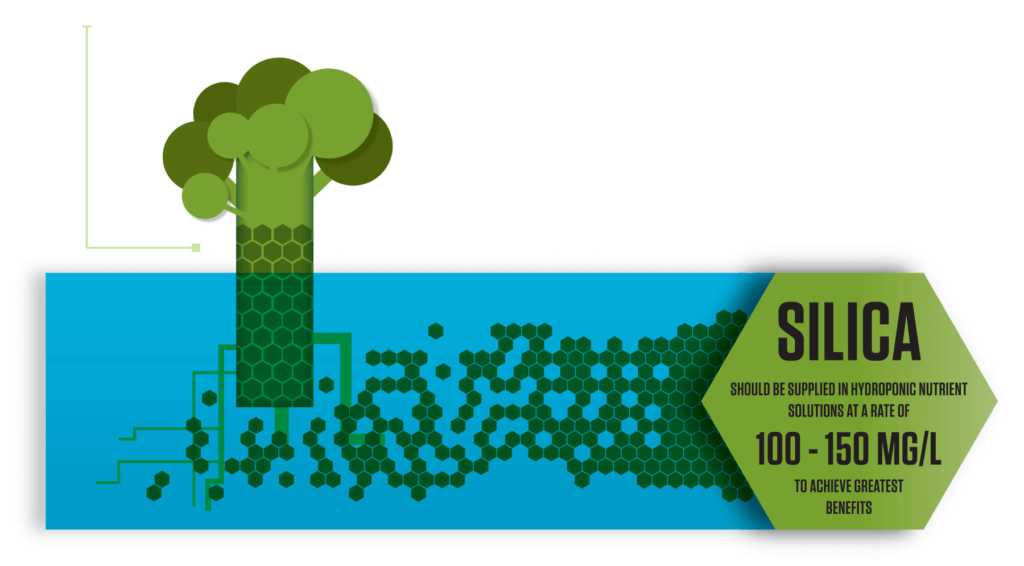Silica is the second most abundant element on earth and plays a vital role in optimizing plant health and yield.
Nutrient products are often defined by their N-P-K rating, and many growers have their own opinions based on experience, of what NPK to use at different growth stages of their crop. Usually in the fine print of a product’s label, are a list of other minerals and trace elements which it may contain, and we all understand that for growing in hydro, coco or any soilless system, the nutrient product needs to contain the full compliment of essential mineral ions, in the correct balance. This nutrient information, long kept as closely guarded secrets is now common knowledge. Plants growing in natural ecosystems absorb, translocate, and use or accumulate the minerals found in the soil surrounding their root system. This range extracted from natural soils usually comprises all the mineral ions we are familiar with in hydroponics,
however there a few important exceptions.
The second most abundant element on Earth is silicon, and in many soil solutions (the liquid component surrounding plant roots) soluble silica is present, as silicic acid, in roughly the same concentration as many of the mineral ions we consider important such as potassium and calcium. Plants are adapted to readily use this silica and it is possible for some species to accumulate levels up to 10% of their dry matter. The most important use of silica is in its role as a plant strengthening element, and it is widely reported to improve the sturdiness of stems and leaves, increase resilience to unfavourable growing conditions such as drought or salinity, and provide resistance to disease, notably powdery mildew.
Closer inspection has revealed that silica becomes incorporated into the cell walls of plants, increasing their structural strength and resistance to compression, in a similar way to the reinforcing used in concrete walls and floors.
Some of the benefits seen from using silica in ideal, stress-free conditions may simply be due to better leaf positioning and prevention of wilting giving more efficient light interception and higher rates of photosynthesis. Silica also plays a role in moderating nutrient imbalances, allowing plants to tolerate nutrient or other toxicities, either by redistributing minerals within the plant or leaf tissue, or immobilising toxic compounds in the root system. Besides being incorporated into plant cell walls, silica forms additional layers in combination with cellulose below the leaf cuticle. This layer provides an important method of controlling water loss from leaf surfaces and additional protection from infection.
To achieve the greatest benefits, silica should be supplied in hydroponic nutrient solutions at a rate of 100 – 150 mg/L (ppm), much higher than previously thought. Silica once deposited in plant cells can not be relocated so a constant supply is necessary in nutrient solutions.
More than ever before, it seems that silicate may play a vital role in optimizing plant health, and crop yield.
– Simon Lennard Suntec NZ LTD
Continued in Selectivity of Plant Nutrient Ion Uptake ⟶
